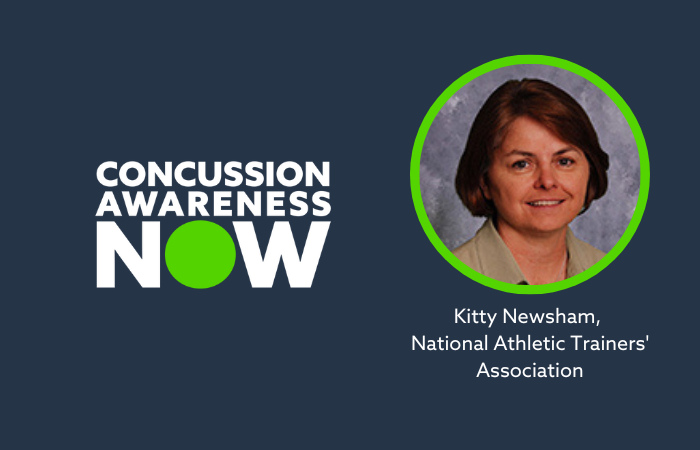As an athletic trainer, I have evaluated and treated many sport-related concussions. People often associate concussions with sport, but concussions are far more common in non-sport activities. I have, certainly, treated athletes with concussions from non-athletic activities. Concussions can happen at any time, anywhere, and at any age!
A concussion is a brain injury that occurs when one has a ‘jolt’ to the head. This can be hitting your head, or being hit in the head, or a jarring force that causes the head to move quickly and suddenly (a jolt). People do not need to be ‘knocked out’ to have a concussion—only 10% of those with concussion lose consciousness.
Falls are a leading cause of concussion. Falling from a ladder, tripping over a loose rug, stumbling on the stairs, being tripped by a pet, slipping in the bath—these are a few of the ways people fall every day. They might hit their heads on something on the way down or hit their heads on the floor. Falls don’t just happen at home. They happen at work, on vacation, at the gym, in the store.
Already late and your ride is waiting for you. Slip on your shoes, they’re not tied, but that’s OK you’ll be in the car soon. Grab your bag; let’s get moving! You step on that lace and trip yourself, causing your head to hit the door frame as you fall. Now you feel embarrassed, a little woozy, and have a headache. A hit to the head during this kind of everyday fall may feel like a small thing, but it can result in a concussion.
Motor vehicle accidents also cause concussions. After an accident, many people are looking for obvious injuries and looking at the damage to the car. Concussions are an ‘invisible injury’ and might be overlooked with all of the other commotion. After a car accident, take a moment to take a measure of how you and others involved in the accident feel.
It’s been raining most of the afternoon and the roads are wet. You are sitting in your car at a red light when suddenly you’re hit from behind! It’s a classic rear-end crash and your car is damaged. You are thinking about your insurance coverage, the other driver’s insurance coverage and if your car is drivable. No bleeding, no obvious injuries, you didn’t hit your head, but you don’t feel quite like yourself. The sudden movement experienced when the car was struck and the sudden stop when the seatbelt held, is enough to give the brain that ‘jolt’ and cause a concussion.
It’s been raining most of the afternoon and the roads are wet. You are sitting in your car at a red light when suddenly you’re hit from behind! It’s a classic rear-end crash and your car is damaged. You are thinking about your insurance coverage, the other driver’s insurance coverage and if your car is drivable. No bleeding, no obvious injuries, you didn’t hit your head, but you don’t feel quite like yourself. The sudden movement experienced when the car was struck and the sudden stop when the seatbelt held, is enough to give the brain that ‘jolt’ and cause a concussion.
Overall, don’t try to shake off a head injury, or try to work through it, or ignore the symptoms. Concussions create chemical changes in the brain that can contribute to problems with how the brain works. Headache is a common symptom of concussion, but not everyone experiences a headache. The same could be said for dizziness, confusion, fatigue, forgetfulness, and vision problems. Symptoms might be present immediately or soon after your injury or they might develop over the next few hours or days.
If you or someone you know has hit their head or had a ‘jolt’ to the head, observe them for symptoms associated with concussion (you can see a complete list of symptoms here) and get checked by a healthcare professional who is trained in concussion recognition and management. Understanding what is wrong can help to determine the best course of treatment. All concussions are not the same and they shouldn’t be treated the same.
Remember that concussions can occur anytime, anywhere, and at any age!
Kitty Newsham, Ph.D., ATC, is an associate professor in the Department of Physical Therapy and Athletic Training at Saint Louis University’s Doisy College of Health Sciences. She is a member of the National Athletic Trainers’ Association (NATA), which is a member of the Concussion Awareness Now coalition. Dr. Newsham is the incoming president of the Mid-America Athletic Trainers’ Association.
